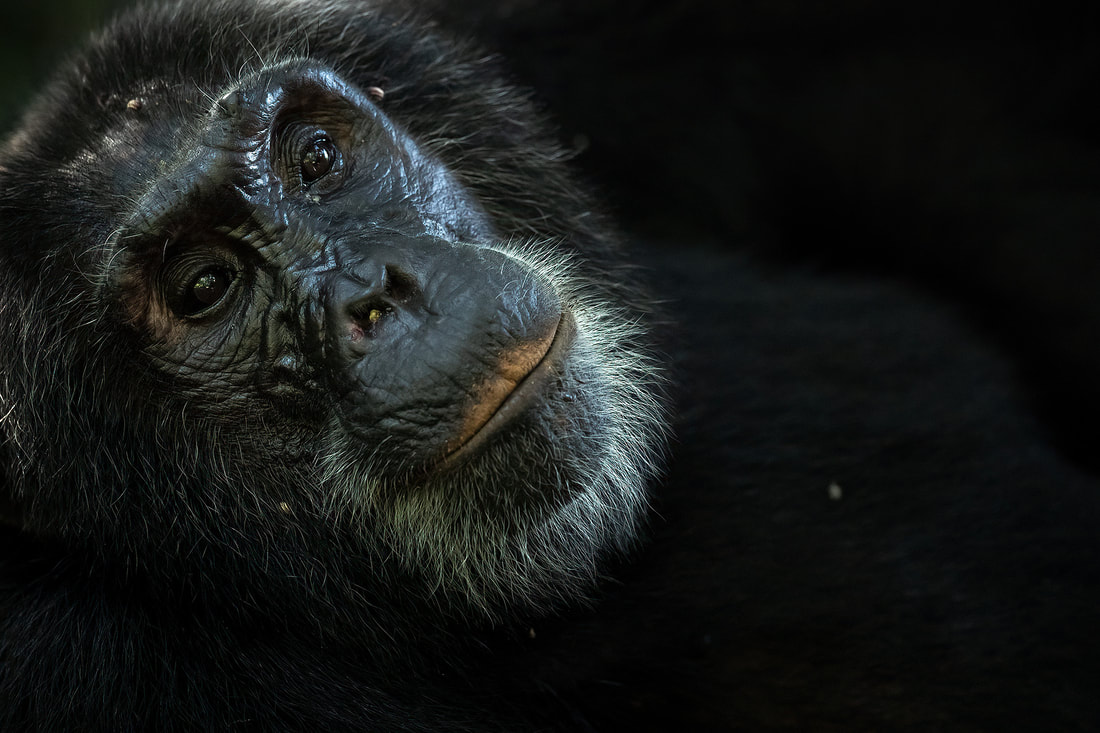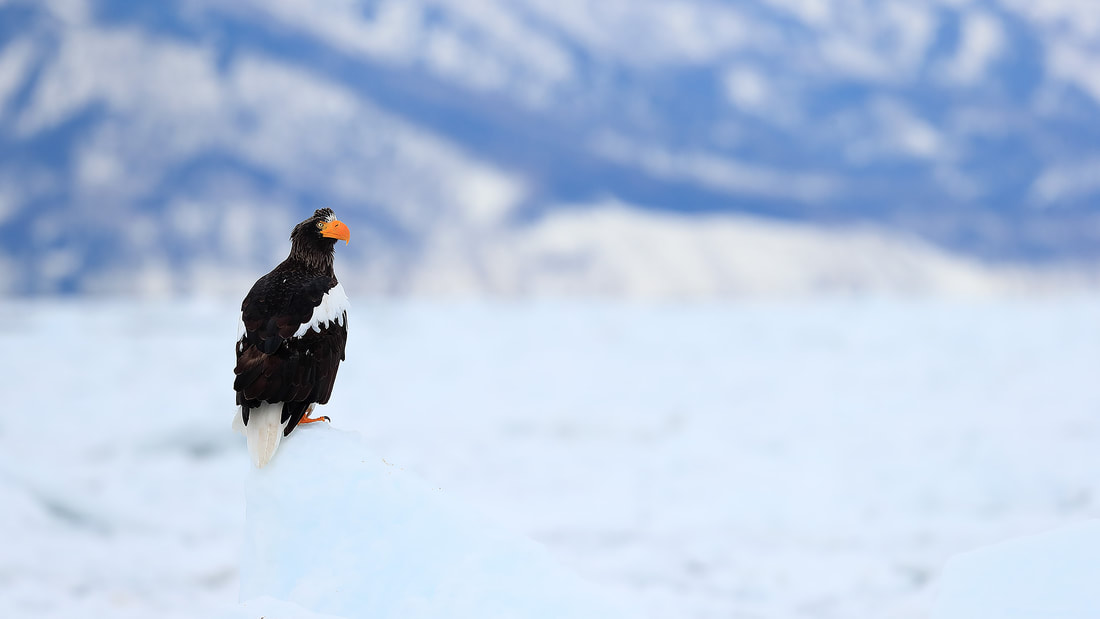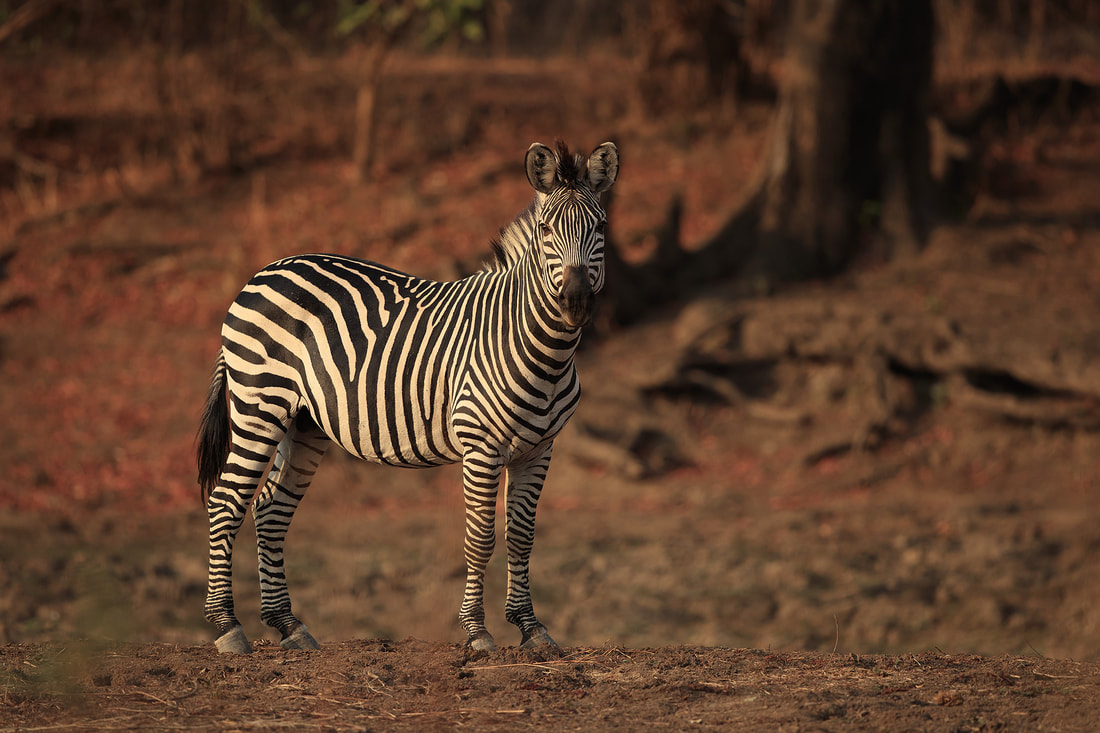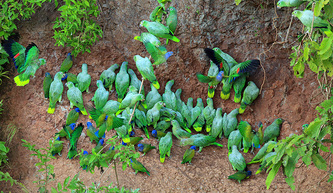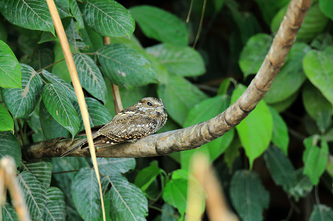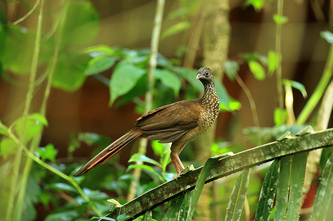|
In 2023, after three years of delays due to a certain pandemic, I was delighted to be at the helm for Wildlife Worldwide's inaugural Uganda Photo Safari. This magnificent country is home to a wealth of exceptional wildlife and is often referred to as the 'Pearl of Africa'. It rightly earned this nickname for its agricultural wealth, but it's natural wealth is even more impressive. If you are into primates, then look no further than Uganda. With that in mind, this trip was put together to maximise photo opportunities of two of our closets cousins - the chimpanzee and the mountain gorilla. Along the way we were able to enjoy a plethora of other species in Queen Elizabeth National Park. Let's start with the wonders that lay within the forests of Kibale National Park. It was time to get up-close and personal with the chimps. Our first gorilla trek wasn't really much of a trek. We came across a chimp in the track while we were still in our vehicle. We quickly got out and enjoyed an incredible session with a large chimp. He rested, groomed and just seemed to enjoy our company before he followed the rest of his extended family deep into the forest where they climbed trees in search of food. We went back again the next day and just had the most incredible, intimate experiences all over again. Around the lodge and in the park we were able to photograph a number of monkey species, of which the most beautiful (in my humble opinion) was the L'Hoest's Monkey. After a memorable couple of days with the chimpanzees and immersing ourselves in the towering forests of Kibale, it was time to head west to Queen Elizabeth National Park. This huge protected area only has a couple of areas which are currently open to safari-goers, but its mosaic of habitats is unlike anywhere else on the African continent. We based ourselves in the Ishasha sector - famed for its tree-climbing lions. Sadly the lions eluded us throughout our stay, but we were instead spoiled with exceptional leopard encounters alongside a host of other typical species seen on a safari. As you can see, we were exceptionally lucky with what we managed to see in just a few days within the Ishasha sector. Furthermore, this area of the park is just absolutely beautiful - surely one of East Africa's most beautiful protected areas. With our safari bug scratched, it was time to head south towards the mountains of Bwindi Impenetrable Forest for what is arguably the highlight of any trip to Uganda. Our primary focus here was to track and photograph mountain gorillas. I have no words to describe a gorilla trek. They can be physically demanding, the photography can be equally frustrating and rewarding and the weather can be unpredictable. However, none of it matters. When you are stood only yards away from the world's largest primates, your world is turned upside down forever more. Nothing will be the same again. This is truly is a life-changing experience and I implore you, nay, I beg you to experience it for yourself. So what do you think? I really hope that I have inspired you to give Uganda some consideration when planning your next wildlife photography adventure. There is nowhere quite like it for such a varied experience and mesmerising wildlife encounters. I do hope you can join me on an upcoming Uganda Photo Safari with Wildlife Worldwide - you can find out more about the trip here.
0 Comments
I remember seeing the first images of Japan in winter around 10 years ago, but I had no knowledge of the country and very little idea about the wildlife. However, at the start of 2019 I was asked whether I would like to lead Wildlife Worldwide’s inaugural photography tour to the country, during the snowy winter months, focusing on red-crowned cranes, Steller’s sea eagles and of course the much-loved Japanese macaques (or snow monkeys). Firstly, if you decide to visit Japan, I can’t recommend Japan Airlines enough - they were truly exceptional. The majority of Japan’s wildlife is concentrated along the main island’s central spine or on some of the smaller, wilder islands such as Hokkaido. This is where my group spent the majority of their time, on the beautiful snowy island of Hokkaido. We had wonderful sightings of whooper swan and red-crowned cranes during the first couple of days on the island. We had the chance to see a pair of Ural owls in the nearby forests and numerous woodland birds (many of which are recognisable to those from Europe). For me though, the species I was most looking forwards to seeing was the impressive Steller’s sea eagle. Let’s just say I wasn’t going to be disappointed … We didn't have the best light for our time in Japan, particularly with the cranes - it was either too gloomy or too bright. Fussy photographers are a pain, but it does make such a big difference. It was really gloomy for my time with the swans, so I didn't really get anything worthwhile, but it was lovely just to watch them. After our time in the island's volcanic interior, it was time to head to the coast in search of Steller's and white-tailed eagle. After heading out in to the see ice to photograph the eagles, we headed south towards a frozen lake for more eagle photography. There was also an opportunity to enjoy the glorious birdlife around a traditional onsen. The highlights here were the Japanese pygmy woodpecker, the Japanese sable (a member of the marten family) and the Blakiston's fish owl (the largest owl in the world). After an amazing week on the island of Hokkaido, enjoying the snowy conditions and stunning wildlife, it was time to head back to Tokyo. We spent a night in Tokyo before heading into the main island's centre to the city of Nagano. To be more precise we headed to the town of Yamanouchi, the perfect place to base ourselves for photographing the famed 'snow monkeys' or as they should be known, Japanese macaques. Sadly, there was a bit of a heat wave in the mountains and snow was rather lacking for the most part. So what can I say about Japan. Well, quite simply, it is fantastic. Don't expect to be on your own, there will nearly always be other people about, but it is still somewhere I recommend highly. For the opportunities to see Steller's sea eagles alone it is worth it. Be sure to join on Wildlife Worldwide's Japan's Winter Wildlife photography tour.
It was my third week in Zambia's South Luangwa National Park and I was well and truly in the groove. Being in the African bush is where I feel most at home, it has a hold over me like nowhere else. It was now I really felt in tune with my surroundings and really in sync with the wildlife of this remarkable national park. It was my second tour of the season leading for Wildlife Worldwide and it was another delightful group of people. Our local guide was Bwalya, who's love of photography and wildlife was immediately apparent. This week turned out to be the week of leopards and lions. We were blessed with numerous encounters and sightings and rewarded with some fantastic photography opportunities. Once again, rather than going in to too much detail, I will simply let the pictures do the talking. As you can see from all of the images, my group and I were blessed with some amazing sightings. In fact, for me South Luangwa offers such incredible variety and world-class photography opportunities. These are only a taster of what we were able to enjoy, but I hope it inspires you to join me in 2021 (there are still a few places remaining). You can book your place here.
The third day in the Amazon Basin and another early start, this time I was heading to the famous 'clay licks' on the Napo River. These are muddy cliff faces along the river bank, where large numbers of Parrots come to feed on the soil. First though, we had to head across the black lake and a short walk through the forest to get to the motorised canoes. When we arrived at the river side of the lake, we were greeted by a tell tale crashing sound in the canopy. There, above us, were a huge group of Squirrel Monkeys, undoubtedly the same group as we saw upon our arrival to the forest, and joining them were a group of White-faced Capuchins. They 'monkeyed' around for a while but we couldn't stay long, we were on a mission that had a time limit. After our morning monkey fix we quickly made our way to the motorised canoes on the banks of the Rio Napo. After around a 30-minute ride down the river, we arrived at the large clay cliff where we would not have to wait long for our feathered friends. The noise was what you notice first, a constant noise which can only sound like a group of parrots together. They chatter among themselves, until one builds up the courage to leave the safety of the trees and expose themself on the bare cliff face. The parrots have to come back every few days, a wide variety of species are reliant on these clay licks to ensure that the minerals in the soil counteract the naturally occuring toxins in their diet. If they couldn't get these vital nutrients then they would not survive. Occasionally the odd Boa Constrictor ambushes the birds as they fly to the cliff face and this is why they are particularly nervous and flighty. We we were quickly in luck with a variety of different species feeding on two different parts of the bank. Mealy Amazons making up most of the numbers but Dusky-headed Parakeets providing plenty of vocal support. We next visited the inland 'cave' parrot lick of Napo Wildlife Centre, this was around a half an hour walk into Yasuni National Park and a sit and wait affair. The noise again was staggering, particularly as the birds surround you in the trees above, you know they are there but you just can't see them. Gradually they come lower and lower until one brave individual decides to break cover and starts to carve off small slices of clay which it eats as if it were food. Have a look at the video and you can hear the noise for yourself! After a long day out and about around the forest and spending time around the clay lick on and off up until lunch, it was time to head back to the lodge and try my hand at a bit of afternoon macro photography. However a very unexpected visitor ended up altering my plans somewhat. I practised my macro photography as I was meant to be running a workshop there later on in the evening, and having found some good subjects in the shape of spiders and other creepy crawlies I was happy to get some rest. However, on my way back to my room I saw some movement ... As you can see the surprise animal, and now definitely one of my favourite species worldwide, was the Pygmy Marmoset. This is the world's smallest monkey, in fact it is actually hard to describe just how small this monkey is. Let's just put it this way, it would easily fit into the palm of and adult person. At first I only saw some movement on the edge of one of the walkways, I actually thought it was a small bird. It was only as I approached the tree it jumped into, that I realised I had found this amazing little creature. I tried to find others around the lodge so they could also see this tiny primate but they had all gone out on their afternoon activities.
I was very lucky to be completely alone with the little fellow and at one point was no more than 3 metres away, it was actually quite an intimate moment. Two primates of vastly different sizes, checking on another out and seeing what they are about. It seemed just as intrigued by me as I was by it. That was why after the first shot above, the others are in the open, it was quite content to come out in the open and not hide away. What a day it was then ... amazing parrot sightings, a trip down the Rio Napo (a tributary to the mighty Amazon) and the world's smallest monkey hanging about and happy to let me take its portrait. I guess that is the beauty of wildlife, sometimes it ends up coming to you and that makes it that much better! So after my first afternoon in the Amazon I was already and raring to go for my next outing and to see the rainforest proper. It was arranged that I would be heading for the canopy walkway the next morning and so I packed my camera bag ready to go. The main issue being that I didn’t know what I might need, so I took everything … all 16 kg of it! So as you can imagine it was pretty heavy, and with daytime temperatures in the 30s and humidity levels usually well over 95% it was going to be a hard day. I woke up the next morning, heaved the bag onto my back and headed off into the forest with our English speaking guide, Oscar. We stopped every now and then to see things of interest and then we stopped close by to a particular tree and Oscar set up the scope. He spent a bit of time focusing the scope onto a small hole about 60-70 feet up a huge tree. There in the hole were three Night Monkeys, these small primates always return to the same hole to rest during the day so he knew exactly where they would be. After a pretty crappy photo (due to it being very early in the morning and way up a tree) we moved on to the canopy walkway. Wow, wow and wow! What and amazing experience to be above the forest at such a height, seeing the birds and the mammals and just the trees in all their glory. There we saw bird species of which all were new to me, things ranging from tiny flycatchers to the Black Vulture soaring above us. We saw three species of monkey; Red Howler Monkey, Black-mantled Tamarin and Red Titi Monkey. So anyway, enough blabbering, here are the pictures from that morning and some from the afternoon. After a long hard morning, but definitely one to remember, we had a lovely relaxing lunch and some noisy visitors in the form of Speckled Chacalacas right outside my room as you can see above. The afternoon activity was a photographic boat ride around the black lake, the primary focus was meant to be the prehistoric looking Hotazin. This ancient species of bird has remained unchanged for thousands of years and are extremely successful. However on this occasion all the wildlife seemed a little shy and refused to show themselves particularly well. This is when as a photographer you have to try and be a little more imaginative. The herons in the foliage I particularly like for their more artisitc approach of "Animals in their Environment".
The lake and the lodge both made good photographic subjects too. The lodge looked particularly beautiful at night with its warm lighting glowing among the dark forest. The tree frog species you can see, right at the end of the selection of images, came and found us. Whilst sat at the bar in the evening he appeared on the icecream freezer, seemingly enjoying the cold metal and escaping the constant heat even if only for a short while. So my first full day in the Amazon was certainly educational, introducing me to a variety of main species you can encounter, it wasn't a particulaly good day for close views of mammals but the wealth of bird life was obvious to see. The only down side from a personal point of view was that I wasn't really provided with any great photographic opportunities but you have to take what you can get. The rainforest isn't a forgiving place and you have to work really hard to get good images. Perhaps if this was a pure photographic tour it would have been a very different matter. But full credit must go Part 3 has a new favourite mammal and a splash more colour ... so keep reading! So a few weeks ago I was presented with a superb opportunity, “Would you be interested in joining the Naturetrek Wildlife Festival in Ecuador at the world famous Sacha Lodge in the Amazon Basin? On one condition, that you act as a photographic leader and run some photographic workshops?” I was asked. As I am sure you can all imagine it was a tough choice, before I knew it (2 weeks later) I was on a plane flying from Heathrow to Quito. Quito is a historic, Spanish colonial city which is now the Capital of this relatively small nation. The city was really just a stepping stone towards the Amazon basin but I did a small amount of high altitude birding the day before my flight into, what was for me, the unknown.
So after a day to try and adjust to the altitude, Quito is in the Andes and higher than most European mountains, it was time to board an internal flight to the city of Coca. This city was a small community only 20 years ago but the discovery of oil has brought with it an industrial boom to the Amazonian region. This of course has greatly improved the wealth for the Ecuadorian government but it seems the environmental problems could be severe. Anyway, back to the adventure and the treasures that lay in store. We transferred down the Rio Napo from Coca, heading eastwards along the swollen river on a, high speed, motorised canoe. We were dodging submerged trees for the journey’s entirety but that just added to the excitement. After a couple of hours watching the river world go by, we arrived at the landing point for the lodge. Here we had to alight and start a kilometre long walk through the rainforest to a black lake, on which the lodge is situated. As we made our way along the path and the boardwalks we heard some crashing in the tree-tops. To our amazement, after only being in the forest for half an hour, we had our first two species of primate … a huge family group of Squirrel Monkeys and a slightly more secretive family of Capuchins. It was the Squirrel Monkeys that were the stars of the show, they whole group crossed the path we were on using the overhanging trees and at times were only a few metres away. They sat and posed nicely and what really amazed me, was that they looked straight through us. We weren’t even worth paying attention to, as a large group of people we were just a series of obstacles that could be easily avoided by staying up in the trees. Anyway enough of my rambling enjoy the photos!!!! |
AuthorBret Charman Archives
July 2024
Categories
All
|



